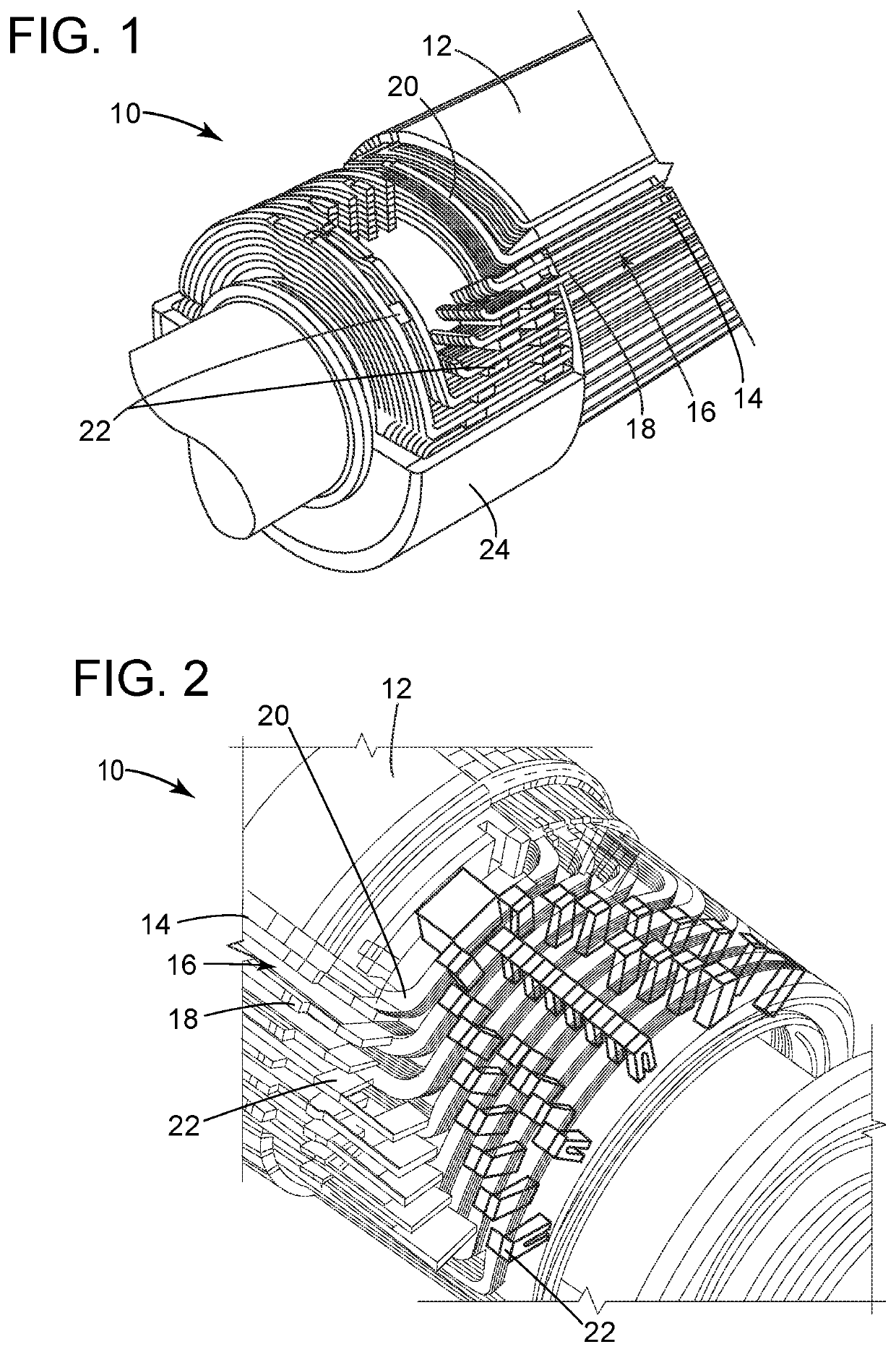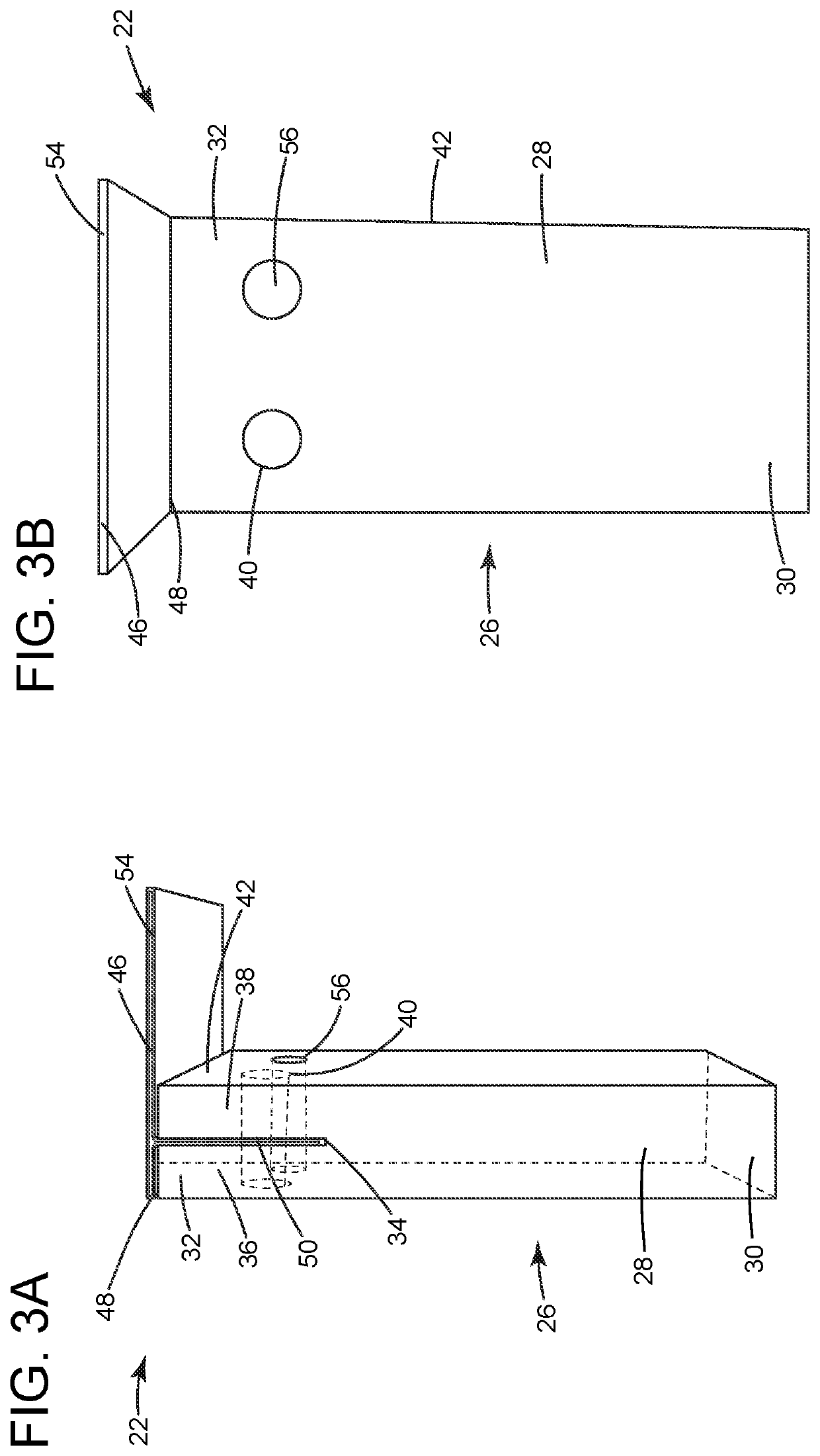Generator field endwinding blocking
a technology of endwinding coils and generators, which is applied in the direction of magnetic circuit rotating parts, dynamo-electric machines, magnetic circuit shape/form/construction, etc., can solve the problem of increasing the tear load to pull the cap ou
- Summary
- Abstract
- Description
- Claims
- Application Information
AI Technical Summary
Benefits of technology
Problems solved by technology
Method used
Image
Examples
example 1
[0042]In this example, an endwinding blocking member with a “dual” cap configuration was produced. In this example, two caps formed of NOMEX were inserted into a slot machined in a glass-based blocking. Each of the caps included a long bended section extending out from the slot and along a top surface of the blocking in opposing directions and extending beyond the periphery of the top surface. The portion of the caps in the slots each had two holes aligned with two transverse holes in the blocking. Pins were inserted into each of the holes in the blocking and the corresponding aligned holes in the caps, locking the caps to the blocking. After formation, the endwinding blocking member with the “dual” cap configuration underwent a series of tests to demonstrate the holding power of the “dual” cap. These tests included pull tests in vertical loading to simulate assembly, hammer tests to establish ability to withstand vertical hammer blows, hammer and vertical pull tests establishing th...
example 2
[0043]In this example, a bonding material was applied to an endwinding blocking member with an “L” shaped cap as described herein. In this example, the bonding material was applied to the “L” shaped cap, and between the “L” shaped cap and the blocking member. In this example, the bonding material that was applied included an epoxy filling compound (A50A233). The endwinding blocking member with the “L” shaped cap was subjected to the same testing described in Example 1. The tests showed that the “L” shaped cap with the epoxy filling compound on the cap experienced peak separation force at 85 lbf, while the configuration with the epoxy filling compound on the cap and the block showed separation starting at ˜20 lbf, full separation at ˜75 lbf, and peak separation force at ˜185 lbf.
example 3
[0044]In this example, the epoxy filling compound was applied to an endwinding blocking member with a “T” shaped cap as described herein. In this example, the epoxy filling compound was applied to the “T” shaped cap, and between the “T” shaped cap and the blocking member. The endwinding blocking member with the “T” shaped cap was subjected to the same testing described in Example 1. The tests showed that the “T” shaped cap with the epoxy filling compound on the cap started experiencing separation at ˜10 lbf with peak separation force occurring at 70 lbf, while the configuration with the epoxy filling compound on the cap and the block showed separation starting at ˜20 lbf, full separation at ˜60 lbf, and peak separation force at ˜115 lbf.
PUM
 Login to View More
Login to View More Abstract
Description
Claims
Application Information
 Login to View More
Login to View More - R&D
- Intellectual Property
- Life Sciences
- Materials
- Tech Scout
- Unparalleled Data Quality
- Higher Quality Content
- 60% Fewer Hallucinations
Browse by: Latest US Patents, China's latest patents, Technical Efficacy Thesaurus, Application Domain, Technology Topic, Popular Technical Reports.
© 2025 PatSnap. All rights reserved.Legal|Privacy policy|Modern Slavery Act Transparency Statement|Sitemap|About US| Contact US: help@patsnap.com



